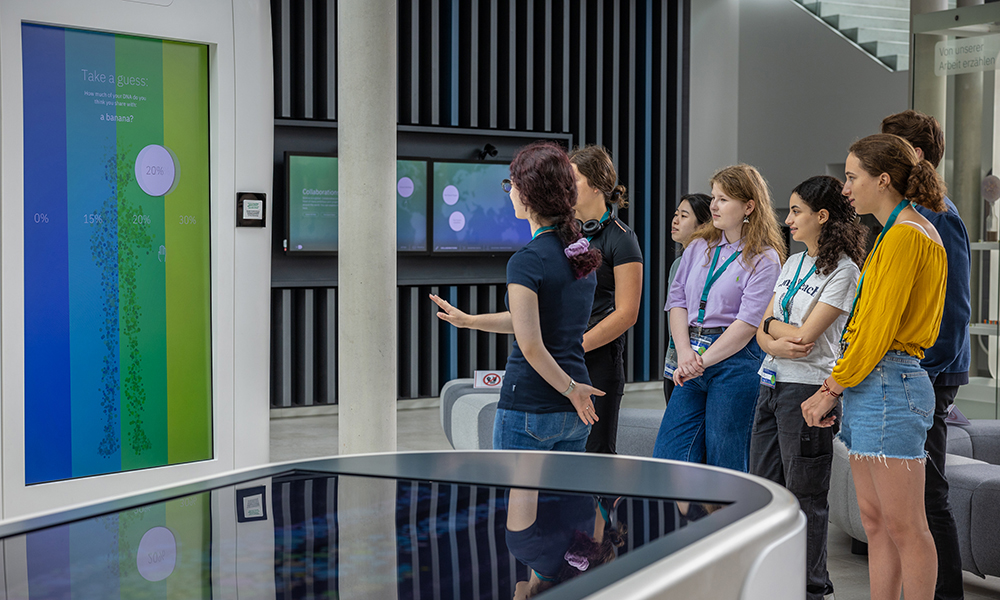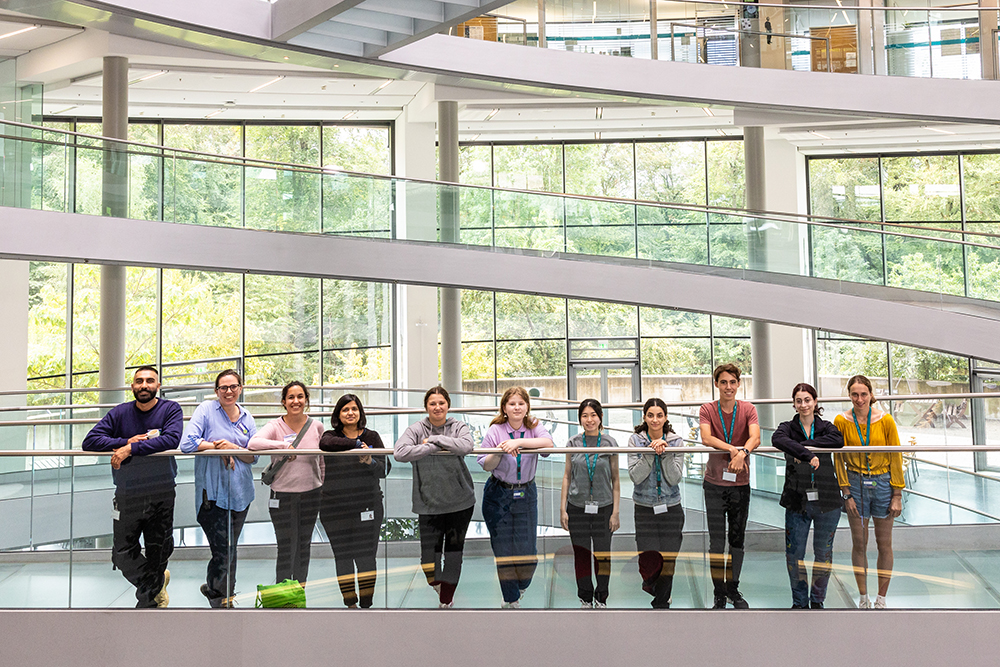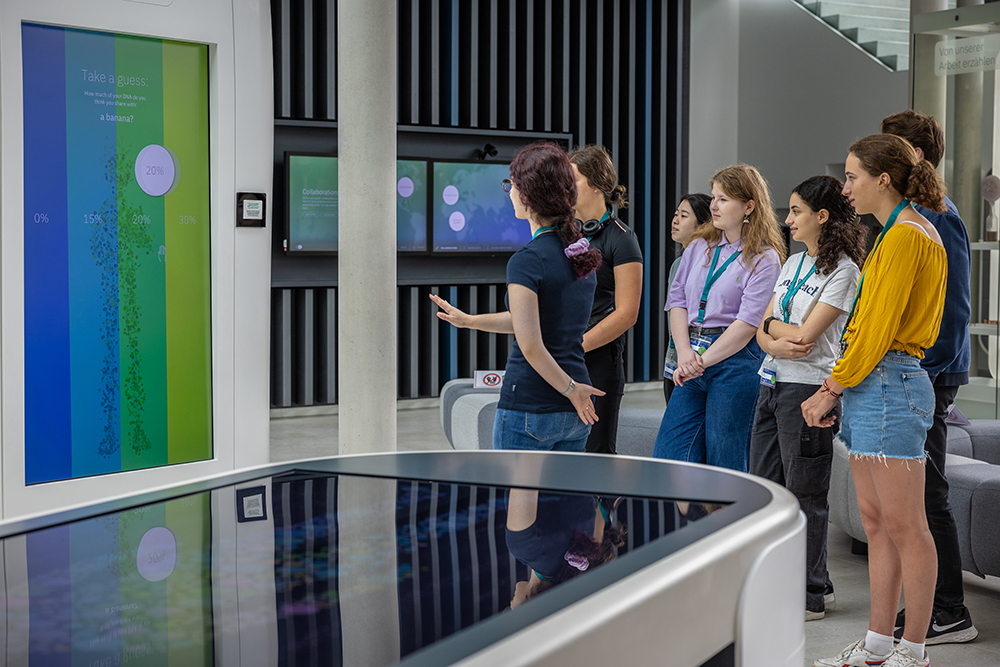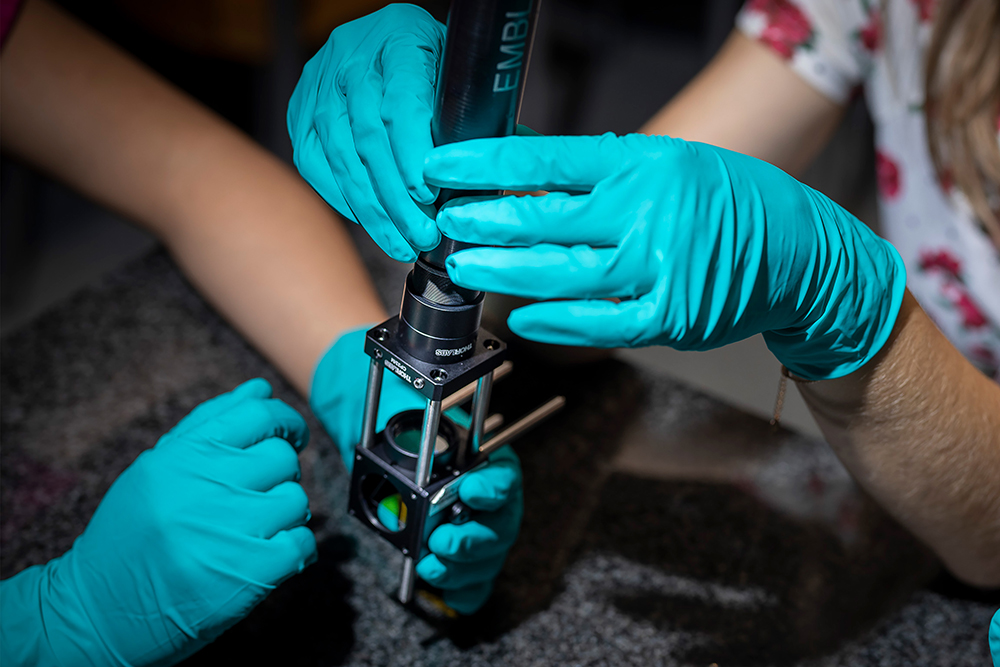The future of science visits EMBL

One day at EMBL with the International Summer Science School Heidelberg.

By Elena Reiriz Martínez
Since 1996, the International Summer Science School Heidelberg (ISH) has been providing an opportunity for young people worldwide to experience the first-class scientific research performed in Heidelberg. Participants are selected from Heidelberg’s sister cities and partner organisations for their keen interest and talent in natural sciences and spend four weeks visiting the renowned research institutions in the city. EMBL supports the event every year through workshops and internships. This year’s seven participants arrived in Heidelberg from Kumamoto (Japan), Rehovot (Israel), Montpellier (France), and Jelenia Góra (Poland).
In their first week in Heidelberg, the group visited EMBL for a day of scientific discovery, hosted by the Science Education and Public Engagement (SEPE) team. They spent the morning exploring “The World of Molecular Biology”. This new permanent exhibition celebrates molecular biology research, people and technologies at EMBL – from DNA to ecosystems to the latest advances in imaging technologies. Through its many interactive elements, the exhibition offered highlights for all the young scientists, for example holding real DNA in their hands or using virtual reality goggles to watch cell division in an embryo.

In the afternoon, the ISH participants had the opportunity to build the “Microscope in Action”, a research-grade fluorescence learning microscope developed at EMBL, from its basic optical, mechanical, and electronic parts. Working in groups, they then used the microscopes to examine pre-prepared samples, including convallaria rhizomes and a section of a rabbit’s tongue. However, they soon started preparing their own samples, using everything from leaves of a tree outside the room to their own hair and staining these samples with fluorescent text marker dye.

The ISH participants are interested in a large variety of scientific topics, from astrophysics to regenerative medicine, so, they all enjoyed different parts of the workshop. Shelly from Rehovot, an aspiring physicist, for example, loved the opportunity to assemble a microscope with her own hands. For Alicja from Jelenia Góra, who is more interested in medical science, it was looking at different tissues under the microscope that was “right up [her] alley”. The group was so fascinated by their experiments that they had to hurry to catch the bus back to their hotel.
Although their time in Heidelberg has come to an end, we are sure this was not the last time we’ll hear about these young scientists!
